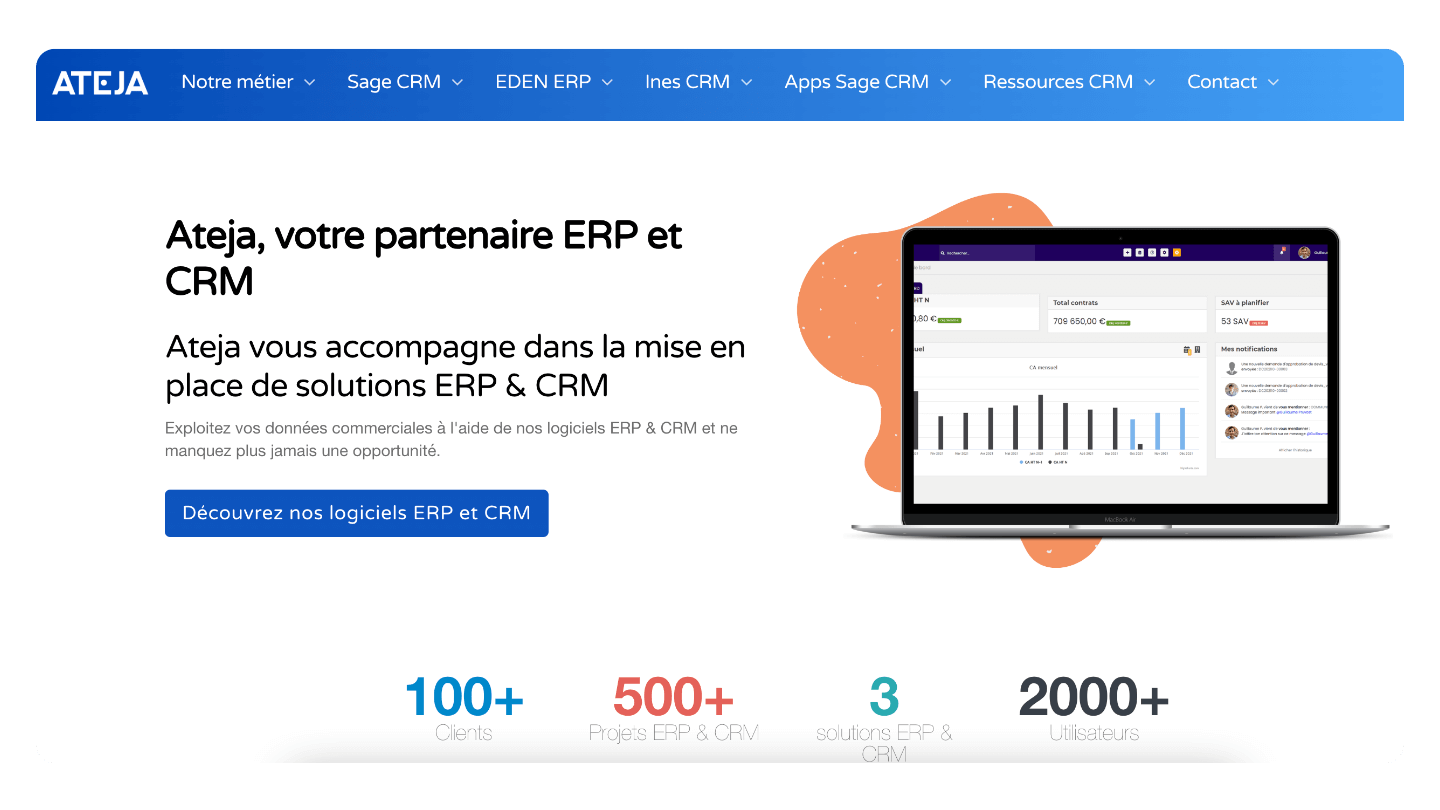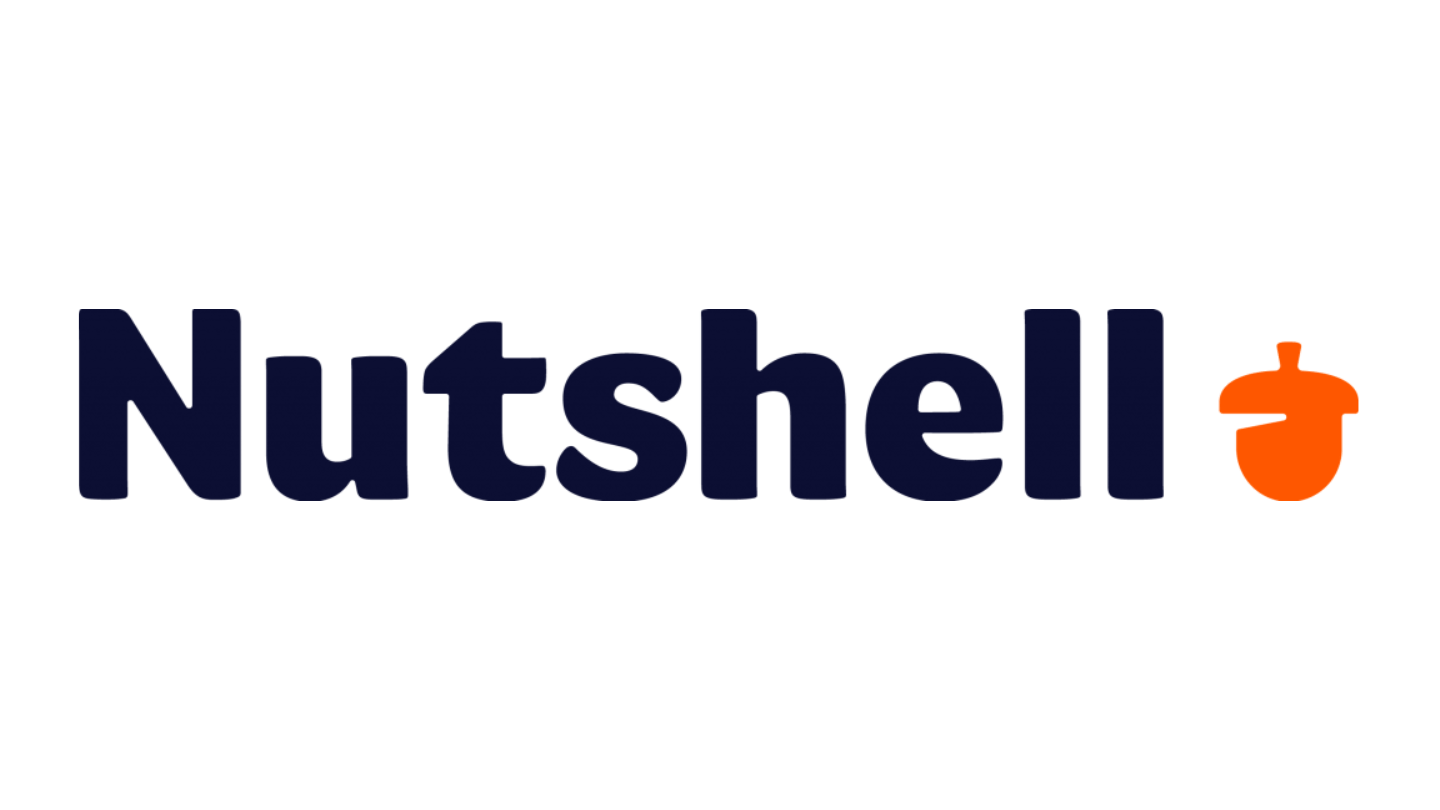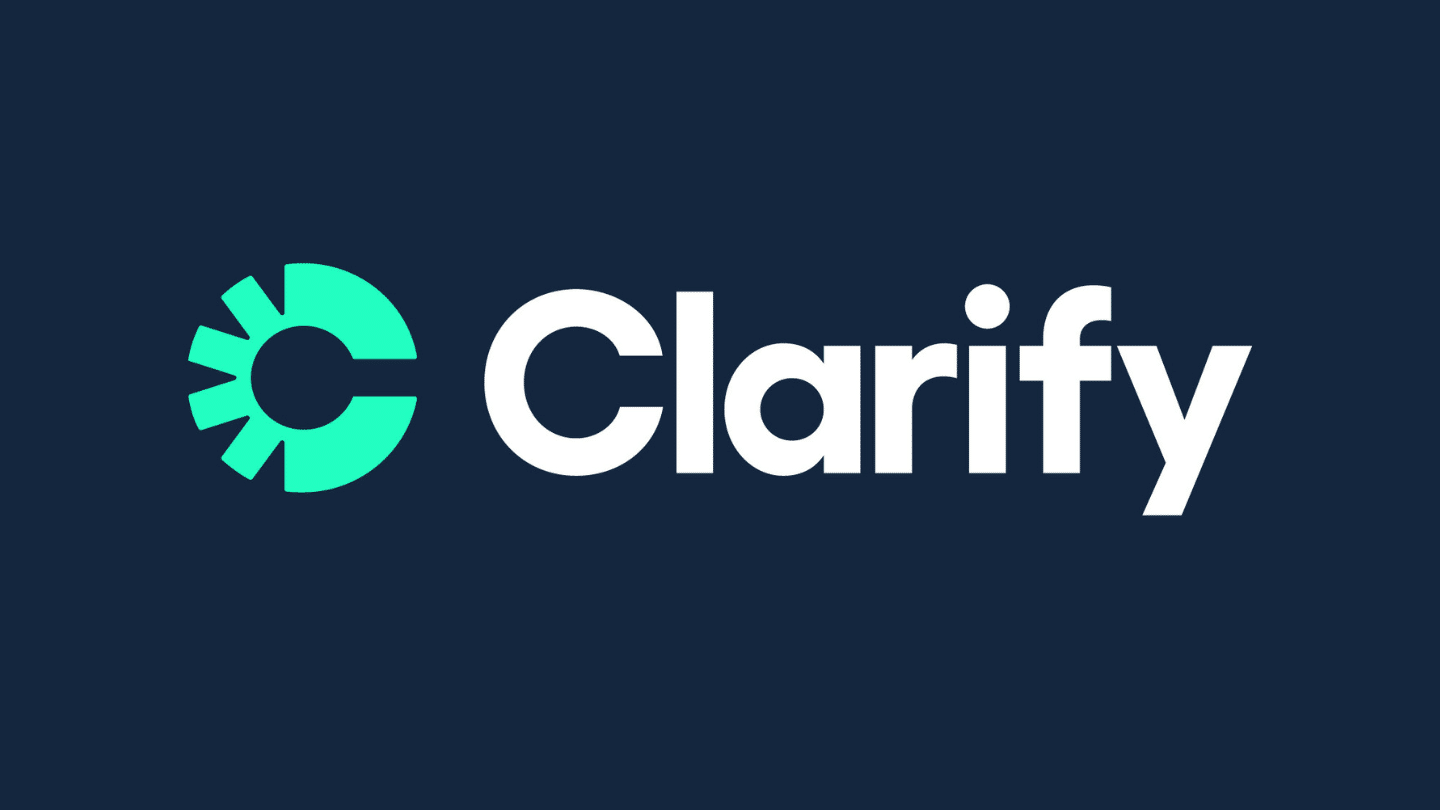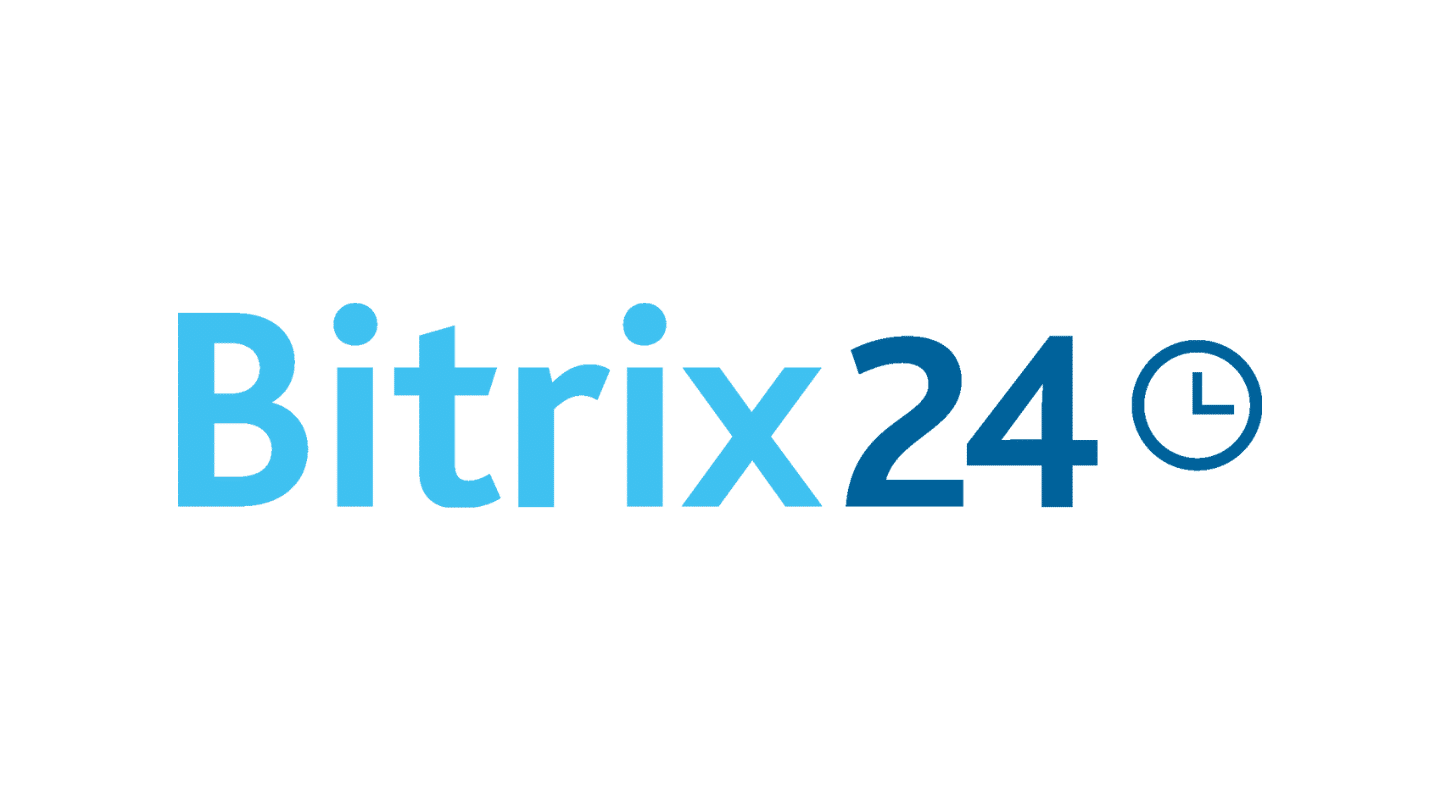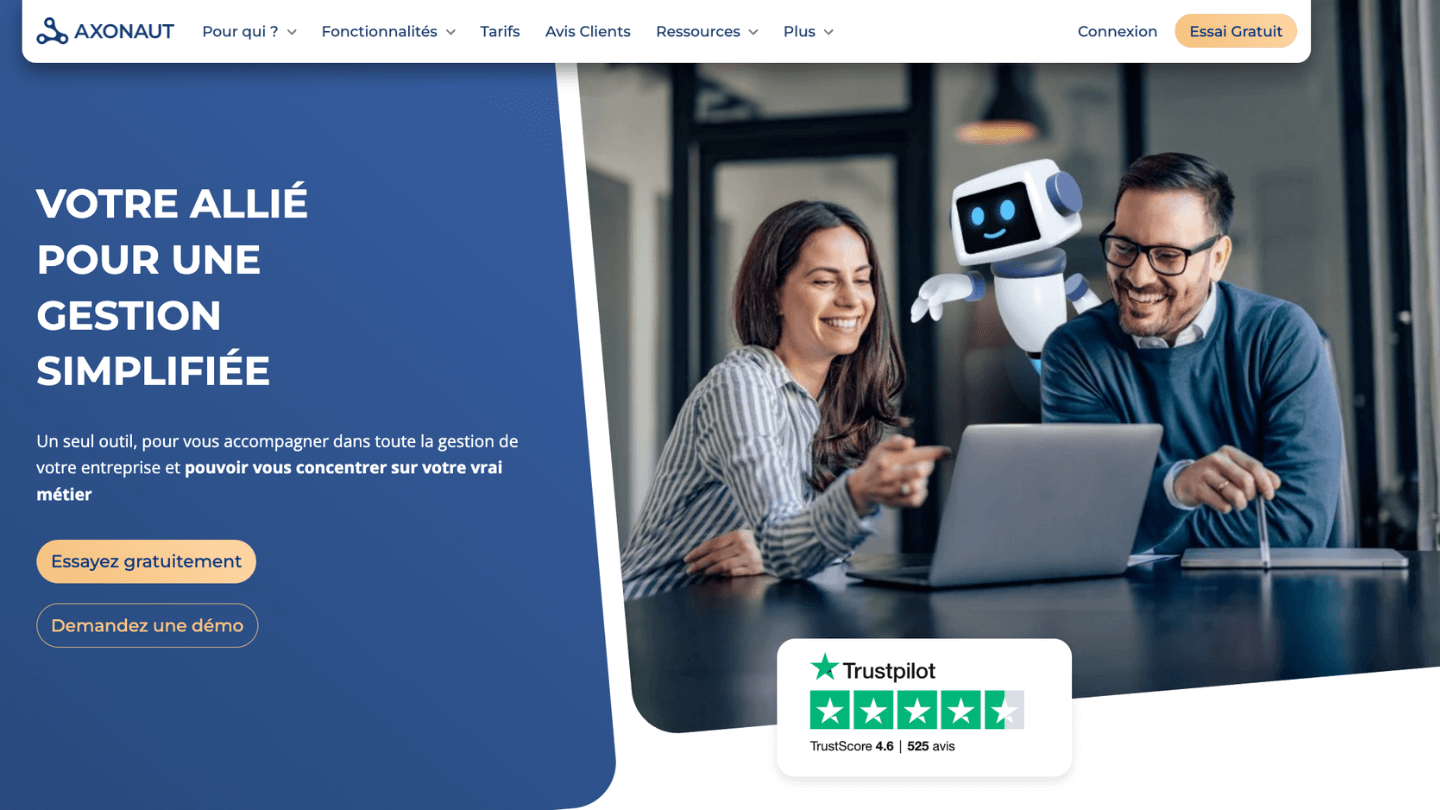Is your current CRM more trouble than it’s worth? Do you feel it’s holding you back more than it’s helping you? Welcome to the club! Many companies are faced with the same problem: their CRM software no longer meets their needs, and they’re considering a change. But beware: a CRM migration is not a trivial act; it’s a large-scale project that requires a great deal of upstream preparation.
In this article, we tell you everything you need to know before taking the plunge: when to migrate, key questions to ask, steps to follow… In short, we give you all the keys you need to know if a migration is right for you, and how to go about it.
Essayez notre moteur de recommendation pour shortlister les 3 logiciels les plus adaptés à votre besoin
Sommaire
Why change CRM?
First things first: why change your CRM? Before you even embark on a CRM migration project, you need to make sure that CRM migration is the right solution for your challenges and needs.
Here are the most common scenarios:
- Your CRM is more of a hindrance than a help: it’s become so complex to use that your teams spend more time struggling with the tool than doing business. As a result, adoption is sluggish and you’re clearly not getting the most out of your investment.
- Your company has evolved, but your CRM is stuck in the past: it lacks the functionality to meet your new needs, and its ability to evolve is extremely limited. In short, you need more than just a cosmetic update.
- Integrating your CRM with your other tools is a real obstacle course: there’s no way to connect it neatly to your ERP, your marketing tool or your support system. As a result, you spend your life juggling tools and re-entering information.
- The ROI of your CRM is hard to defend: between soaring license costs, mounting maintenance fees and a steady stream of training requirements, your management is starting to take a serious look at the bill. It’s time to find a more profitable alternative.
If one (or more) of these scenarios applies to you, then it’s high time to consider a CRM migration. But before jumping in headlong, there are a few key questions to ask yourself.
Key questions to ask before embarking on a CRM migration project
CRM migration isn’t something you do on a whim.
Before taking the plunge, take the time to ask yourself the right questions:
- What are the objectives of this migration? Increase productivity, regain agility, cut costs? Be clear about your priorities.
- What is the scope of the migration? Do you want to migrate all your entities, all your processes, or just some of them?
- How much data are we talking about, and in what condition are they? An audit is needed to clarify the situation and anticipate the prep work.
- What are the must-have features you’ll need tomorrow? It’s time to challenge your users!
- What budget can you devote to this project, both in terms of investment and internal resources? (find out how much CRM software costs).
In short, the idea is to frame the project as far upstream as possible. Once you’ve answered these questions, you can get down to the nitty-gritty of the migration process.
Essayez notre moteur de recommendation pour shortlister les 3 logiciels les plus adaptés à votre besoin
CRM migration milestones
I won’t hide the fact that a CRM migration is quite a project. But by following a tried-and-tested method, you can put all the odds in your favor. Here are the main steps to follow:
Analysis of existing situation and expression of needs
This is the scoping phase, the foundation of your project. Take the time to take stock of your current CRM processes, data and tools. Sift through everything, identifying strengths, weaknesses and irritants. Then look to the future: what are your needs in the short, medium and long term? What are your priorities? The aim here is to draw up a complete picture of your current and target situation. This framing work will serve as your compass throughout the project.
Sourcing and choosing the new CRM
Now that you know where you’re going, it’s time to find the vehicle that will get you there. This is where the selection phase begins. Armed with your CRM specifications, you can set off to meet the editors on the market. What can be done? Pre-select the publishers best suited to your project. Challenge them, put them in competition. Organize meetings and personalized demos to ensure that the software meets your needs. You’ll feed into an analysis grid that will ultimately help you make the best decision.
Data preparation
This is the big technical part of a CRM migration. Migrating a CRM isn’t just about moving data from point A to point B. It’s about sorting out, cleaning up and restructuring your data so that it’s compatible with your new CRM. It’s an opportunity to sort, clean and restructure your data so that it’s compatible with your new CRM. A lot of hard work, but it will determine the quality of your future tool. So roll up your sleeves and be patient: auditing, deduplication, standardization…there’s a lot of work to be done.
Setting up and deploying the new CRM
Your data is clean, and your new CRM is ready to receive it. All that’s left to do is configure it to perfectly match your business processes. Custom fields, management rules, automation… Now’s the time to get your hands dirty and build your own custom tool. A technical step, yes, but a strategic one. For it is this that will determine how closely your CRM is aligned with your business reality, and therefore its future adoption by your teams. Be thorough, test, iterate… And don’t hesitate to involve your key users in the process.
Change management and training
It’s the home stretch, but not the least. You’ve got a tailor-made CRM in your hands, now it’s up to you to convince your teams to use it. This is not always an easy task. Because a CRM migration isn’t just a technical project. Above all, it’s a human project, a transformation project. You’ll need to support your teams, train them in this new tool, but also reassure them, listen to them and allay their fears. In short, we’re going to have to get them on board. And that’s not something you can improvise. This calls for a real change management strategy, with sponsors, ambassadors, quick wins… A real art, but one that is essential to guarantee the adoption of your CRM and make it a real performance driver.
As you can see, CRM migration is hard work. Calling in a service provider (consulting firm, agency, integrator…) may prove necessary, especially if you don’t have the required skills or sufficient bandwidth in-house. We present a few of them at the end of this article.
Going further
We’ve scoured the market for you. To help you select your new CRM software, take a look at the Salesdorado comparisons.
Focus on 3 key success factors for CRM migration
A successful CRM migration involves much more than simply selecting a new tool. To achieve your objectives, it’s essential to consider three key factors that will determine the success of your project: a clear expression of requirements, a robust data migration strategy and an adoption plan that involves users from the outset.
#1 A concrete expression of needs and objectives
The first success factor in CRM migration is having a clear vision of where you want to go. And that requires a concrete expression of needs.
Your mission is to challenge your users to identify their real needs, the ones that make sense for your business. The idea is to be exhaustive, but also to prioritize. You won’t be able to do everything right away, so you might as well concentrate on the essentials.
My advice
Involve operational staff as much as possible in this phase. Organize workshops, interviews… In short, go out into the field to understand their reality. That’s how you’ll build a specification that makes sense and gets buy-in.
#2 A finely tuned data migration strategy
Let me tell you, this is often the biggest part of the project. But it’s also the most critical: you can’t afford to miss out.
Here again, we’re going to have to roll up our sleeves. On the program: a complete audit of your data to identify duplicates, obsolete information, inconsistencies… In short, anything that could crash your migration. Then it’s time to clean up and restructure, so that your data is clean before the big jump.
My advice
Don’t underestimate this stage, and leave plenty of room in your planning. It’s better to take a little more time now than to end up with a brand new CRM filled with poor quality data.
#3 An adoption plan that involves your users from the outset
Last but not least, the adoption of your new CRM by users is a key success factor. Because even if you choose the best tool on the market, if it’s not used, it’s useless! The key is to involve your users right from the start of the project. Involve them in needs definition workshops, user tests, training sessions… In short, make them understand that this project is also theirs.
My advice
Appoint ambassadors in each team, power users who are a little more technophile than the others and who can help their colleagues on a daily basis.
CRM migration: pitfalls to avoid if you want to avoid failure
While a well-managed CRM migration can positively transform your customer relations, the opposite is also true: a poorly managed project can quickly turn into a nightmare. To give yourself the best chance of success, it’s important to identify the most common pitfalls in advance. Here are the main pitfalls to avoid if you don’t want your CRM migration project to go off the rails.
#1 Underestimating the scope of the project and its impact on the company
The first pitfall, and not the least, is underestimating the scale of the task. A CRM migration is a corporate project that will impact all your processes and all your employees. It’s not something you can just snap your fingers at…
To underestimate the scale of the project is to expose ourselves to serious slippage. Cascading delays, botched stages, budgets cut to the bone… All these ingredients open the door to unpleasant surprises. So it’s best to get the measure of the project right from the start, and give yourself the means to achieve your ambitions.
My advice
Plan ahead, whether in terms of time, resources or budget. It’s better to have a little margin than to find yourself in a panic halfway through.
#2 Neglecting the crucial step of data preparation
We’ve already talked about it, but I can’t stress it enough: data preparation is THE key to a successful migration. Yet this is often the step we tend to neglect, or even skip altogether.
Neglecting data preparation is like building a house on sand. Imagine: your new CRM is finally here, all shiny and new, but the data it contains is obsolete, inconsistent and incomplete. Users, already skeptical, will have no trouble turning their backs on it and returning to their good old spreadsheets. And there goes your beautiful project! To avoid this catastrophic scenario, there’s only one watchword: rigor in data migration.
My advice
Focus on data quality. Appoint a data manager, set governance rules, clean up, restructure… In short, don’t skimp on the means.
Essayez notre moteur de recommendation pour shortlister les 3 logiciels les plus adaptés à votre besoin
#3 Rushing into a new tool without involving teams
Another classic mistake: choosing your new CRM in a small group, without involving users. Often, it’s management or the IT department that takes the lead, in “I know what’s good for you” mode.
Imposing a new tool without consultation is the best way to alienate your teams. Put yourself in their shoes: from one day to the next, they’re asked to change their habits, to adopt a CRM that they only find out about at the last minute. No wonder they drag their feet and are reluctant to use it!
Transparency and co-construction are the keys to winning over customers. Involve your users right from the start of the project, taking their needs and fears into account. In short, make them your allies rather than your adversaries.
#4 Wanting to do everything on your own, without expert guidance
The last mistake not to make: trying to be a hero by doing everything yourself. I know, it’s tempting to think we’ll save money by doing without consultants or integrators. But believe me, it’s often a bad idea.
Why? Because a CRM migration requires specialized skills, whether in terms of technical, methodological or change management aspects. If you want to do everything in-house, you run the risk of missing key points and wasting a lot of time.
My advice
Surround yourself with experts who are used to this kind of project. They’ll help you anticipate pitfalls, make the right decisions and meet your deadlines. These are real assets to ensure your migration goes smoothly!
Going further
4 service providers to support your CRM migration project
You now have the keys to a successful CRM migration. But there is sometimes a gap between theory and practice. That’s why, even if using an external service provider isn’t a must, it can be a valuable asset in securing your project. An expert eye, specialized skills, proven experience… So many good reasons to get support.
To help you make up your mind, we take a look at four solid market players. All of them are well versed in the issues associated with CRM migration, and support their customers in making their CRM projects a success.
#1 Markentive
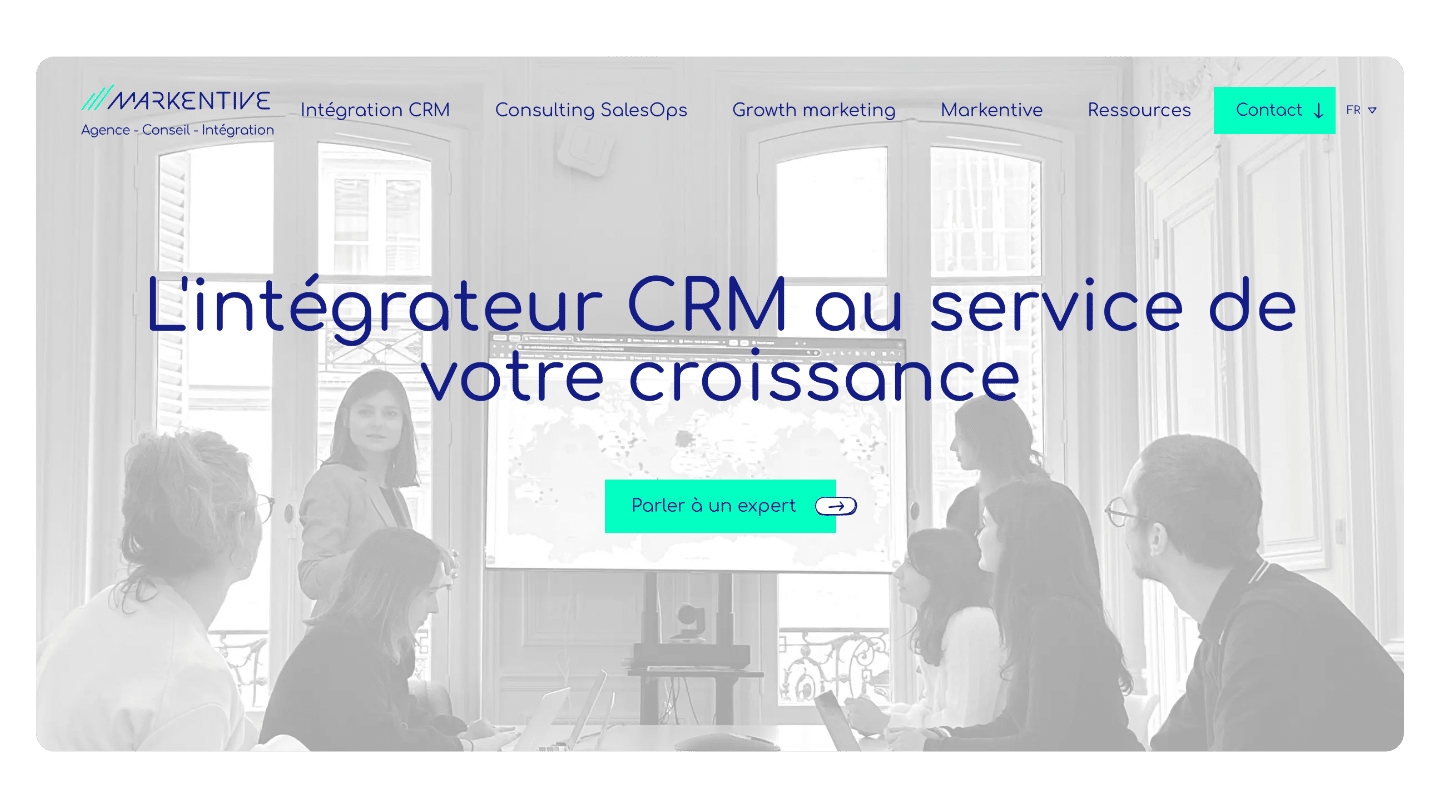
As a CRM integrator, Markentive positions itself as a “Growth Enabler”, putting its expertise at the service of the growth of ambitious companies. Their REBEL (RE-solve, B-uild, E-xecute, Learn) approach aims to offer a complete service from consulting to implementation, including training.
When it comes to CRM migration, Markentive offers end-to-end support, including an audit of the existing system, implementation and configuration of the new CRM, and team training. With over 250 customers to their credit, they are particularly well placed to help scale-ups and SMEs optimize their new CRM tools.
#2 Cartelis
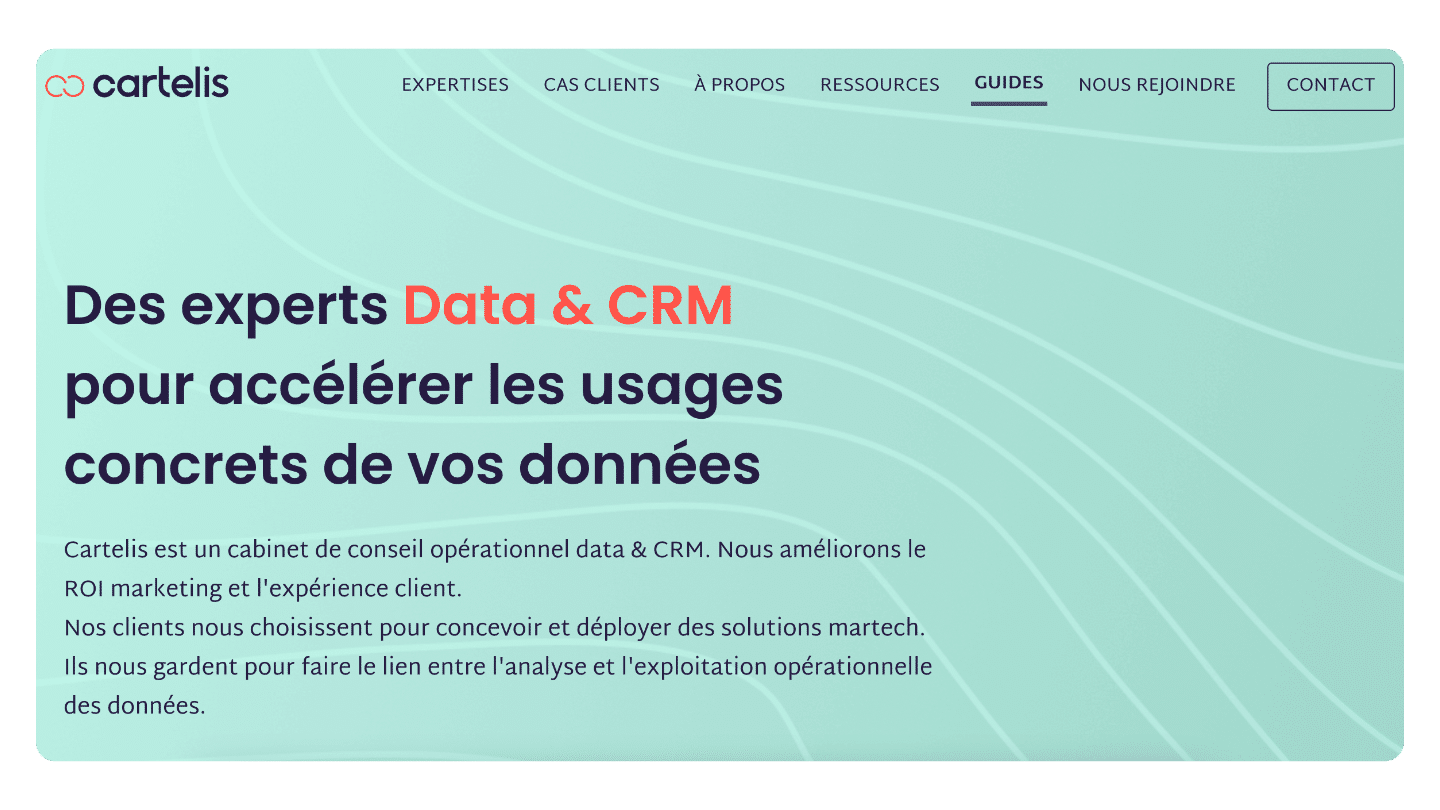
Cartelis is a consulting firm specializing in data and CRM. Their consultants combine technical skills and business acumen to address every aspect of a project, from strategic framing to operational implementation.
Their approach to CRM migration is comprehensive and pragmatic, revolving around an initial scoping exercise, a precise definition of requirements, an audit of existing systems, the design of a tailor-made IT architecture, the selection of the tool and operational management of deployment: configuration, data migration, change management. The little extra: they make it a point of honor to make customer teams autonomous on their new CRM.
#3 Inbound Value
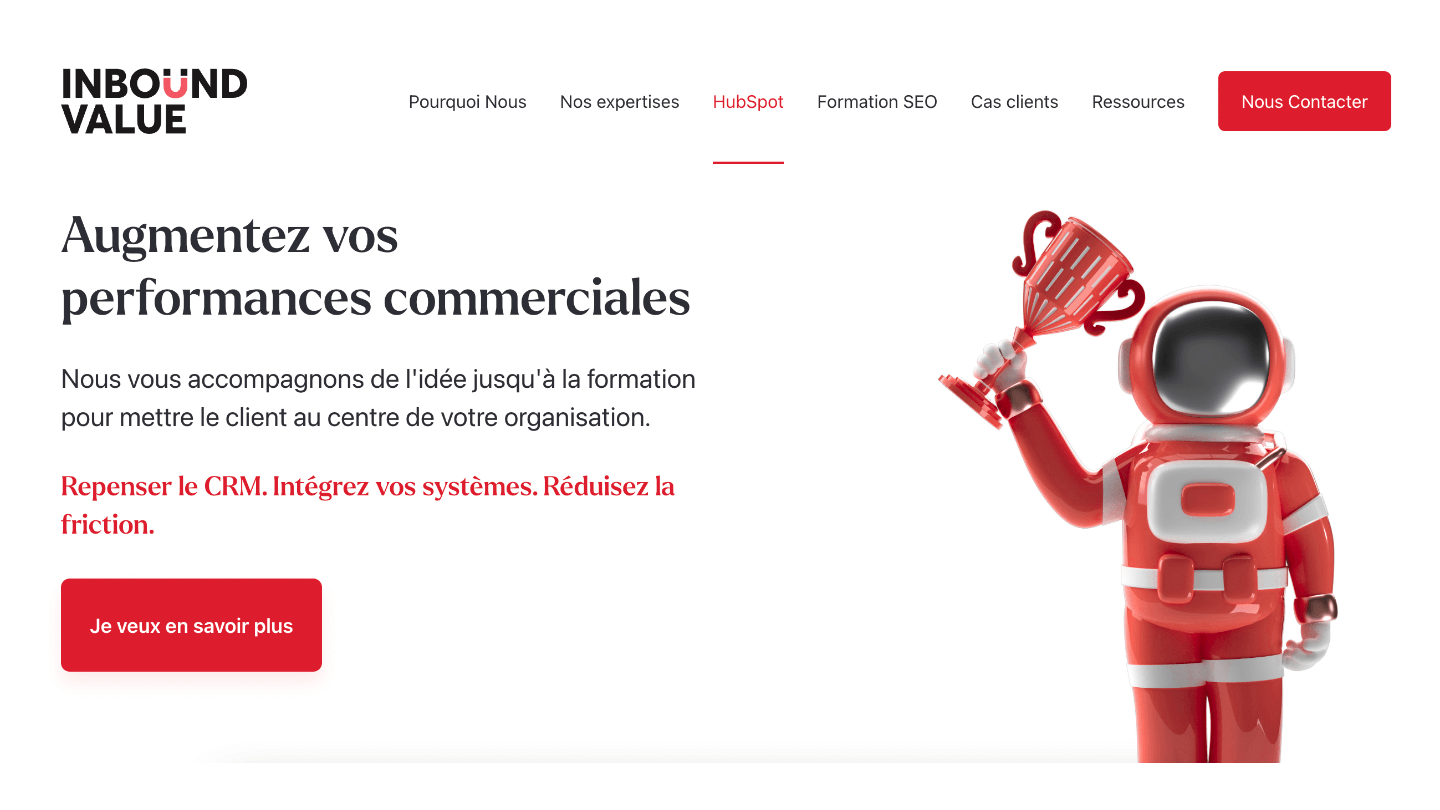
Inbound Value is a B2B inbound marketing agency recognized for its in-depth expertise in the HubSpot platform. As one of the leading HubSpot partners in France, it counts many SMEs and startups among its customers.
Inbound Value’s expertise in the HubSpot ecosystem is also applied to CRM migration projects, whether the aim is to migrate to HubSpot or to interface the platform with a third-party CRM. Their experience of “sales enablement” issues also enables them to facilitate the adoption of the new CRM by sales teams.
#4 Ateja
Since 2012, Ateja has been helping SMEs and large B2B accounts to implement CRM solutions in line with their business challenges. Their philosophy: to use technology to streamline processes and interactions. This “business” approach also guides their CRM migration practices. Ateja has extensive expertise in Sage CRM, INES CRM and Salesforce solutions.
In addition to these four players, there are dozens of excellent CRM integrators who can help you with your CRM migration project. To find out more, take a look at our Top 30 CRM integrators in France.
Essayez notre moteur de recommendation pour shortlister les 3 logiciels les plus adaptés à votre besoin

